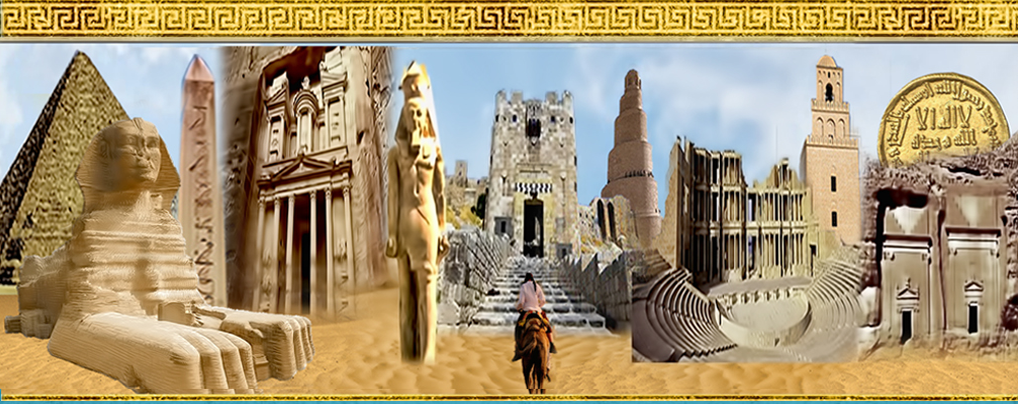Journal of the General Union of Arab Archaeologists

Abstract
رؤى جديدة لتقنيات التحنيط فى عصرالدولة الوسطى في مصر القديمة (2055-1782 ق.م.) ياستخدام التصوير بالاشعة المقطعيىة للمومياء السيدة أمانيت، كاهنة حتحور. في القرن التاسع عشر وأوائل القرن العشرين كانت طرق فحص ودراسة المومياوات المصرية ، تعتمد على الفحص البصري والطرق غير العلمية المدمرة. ومع تقدم التكنولوجيا في القرن الحادي والعشرين، ظهرت طرق فحص علمية غير تدميرية مثل الفحص بالأشعة المقطعية. CT وتهدف الدراسة إلى إعادة فحص المومياوات وإعادة قراءتها بناءً على أدلة علمية واضحة، ودراسة مدى الارتباط بين الفحص البصري بالفحص بالأشعة المقطعية CT. حيث تم تقسيم جسم المومياء إلى مناطق مختلفة لتتبع التغيرات المورفولوجية بعد التحنيط، حيث كشف الفحص البصري عن مظاهر التلف خارج جسم المومياء، بينما كشف الفحص بالأشعة المقطعية عن حالة الجسم الفيزيائية في الهيكل الداخلي للمومياء. توصلت الدراسة إلى تطابق معلومات الأثرية القديمة في طرق التحنيط في الدولة الوسطى وخاصة في العصر الحادي عشر، حيث استخدم المحنطون طريقة الحقن باستخدام زيت الأرز أو زيت العرعر لإزالة الأحشاء الداخلية. كما أظهرت الدراسة وجود بقايا أعضاء داخلية في تجويف الصدر والبطن، وتأكدت سلامة الحجاب الحاجز دون أي تلف. وقدمت الدراسة طريقة لفحص المومياوات تتفق مع الأساليب العلمية دون أن تتسبب في تلف المومياء. كما أشارت الدراسة إلى قلة عدد المومياوات التي تعود إلى الدولة القديمة مقارنة بالمومياوات في الفترات اللاحقة، نتيجة للسرقة والتعرض للتلف خلال فترات الاضمحلال. وأشارت أيضًا إلى أن التحنيط في تلك الفترة كان مقتصرًا على طبقة محدودة من المجتمع.
[EN] The examination and study of Egyptian mummies in the 19th and early 20th centuries relied on visual inspection and non-scientific destructive methods. However, advancements in non-destructive examination techniques, such as Computed Tomography (CT) scanning, have necessitated a re-examination and reinterpretation of mummies based on confirmed scientific evidence. This research aims to reassess and reinterpret mummies using reliable scientific evidence, while also studying the potential correlation between visual examination and CT scanning. This scientific paper presents a contemporary reading of mummification techniques in ancient Egypt through the examination of Lady Amanit's mummy from the 11th dynasty of the Middle Kingdom. The research employs a comparative approach between visual examination and CT scanning, dividing the mummy's body into regions to trace morphological changes post-mummification. Visual examination detects external deteriorations, while CT scanning reveals the internal physical condition, the study aligns with archaeological information on mummification techniques in the Middle Kingdom, indicating the use of injection methods for organ removal. Remnants of internal organs were found within the chest and abdominal cavities, with the intact diaphragm confirming its undamaged state. The non-invasive examination method aligns with scientific approaches without causing harm to the mummies. Moreover, the study highlights the scarcity of mummies from the Old Kingdom compared to later periods, primarily due to theft during periods of decline. It also suggests that mummification during this time was limited to a specific social class. this research provides new insights into mummification techniques and contributes to the field of Egyptology by combining visual examination and CT scanning, resulting in a comprehensive understanding of ancient Egyptian mummies.
Recommended Citation
Badr, Ibrahim; Sutherland, Linda; Tooley, Angela; and Praet, Maarten
(2024)
"NEW INSIGHTS ON MUMMIFICATION TECHNIQUES DURING ANCIENT EGYPT'S MIDDLE KINGDOM PERIOD (2055-1782 BC) USING NON-DESTRUCTIVE CT-SCANNING OF THE MUMMY OF LADY AMANIT, PRIESTESS OF HATHOR,"
Journal of the General Union of Arab Archaeologists: Vol. 9:
Iss.
1, Article 6.
Available at:
https://digitalcommons.aaru.edu.jo/jguaa/vol9/iss1/6
Included in
Historic Preservation and Conservation Commons, History Commons, History of Art, Architecture, and Archaeology Commons

